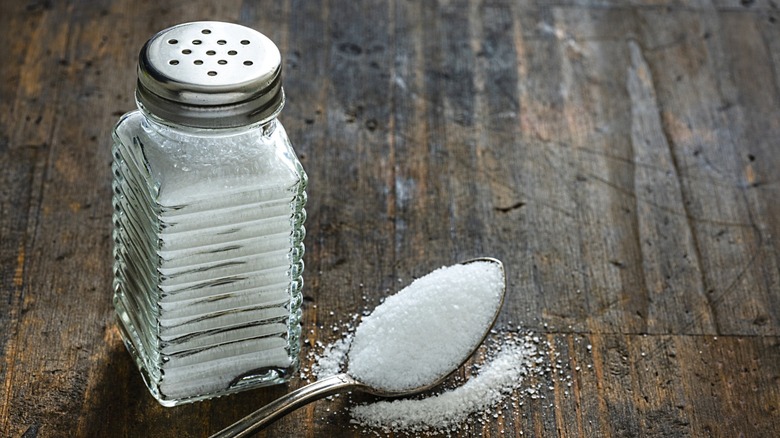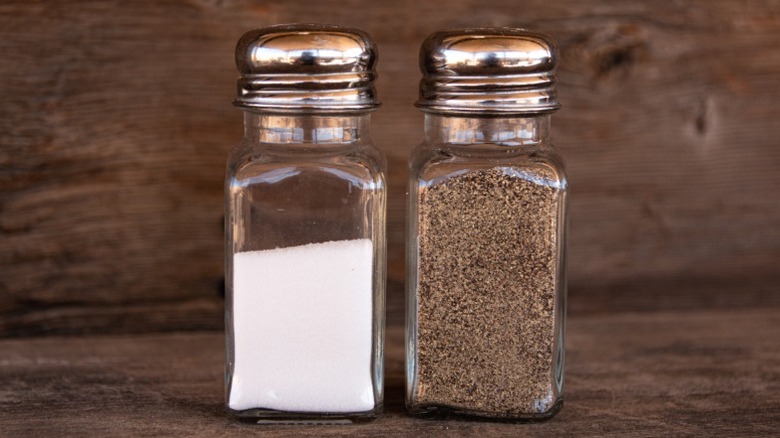The Unexpected Benefit Of Your Salt Shaker's Ridged Bottom
There it is, right next to its life partner — pepper — on your dinner table: a tall, elegant shaker of salt, topped with a shiny steel head, glass flowing downward into a beautifully ridged bottom. You might think this design is just for show — it was probably invented in France, since the salt and pepper spice combo originated in French cuisine, right? — but it actually serves a practical purpose. Apart from the lovely aesthetics, these ridges can be used to break up clumps at the bottom of your shaker, with the help of another shaker or some kind of utensil. Whether or not this was the purpose of the original design, we're not about to look a gift horse (or a gift shaker) in the mouth. Instead, we'll examine its bottom.
Here's how it works: if your shaker of salt (or any other seasoning) is stubbornly clumped or otherwise stuck, simply turn it upside-down and place the bottom of another shaker against it. Rub the two bottoms together, almost like you're grating cheese, and just like they say in "Dune," the spice will flow. (Well, actually they say the spice "must" flow, but you know what we mean.)
Salt shaker ridges may have other uses, too
We're not entirely sure if those ridges on shaker bottoms are actually there to help break up clumps, or if it's just a happy accident. But those ridges serve a few different purposes, and the reasoning behind them is a little more practical than "magic salt-shaking hack." For instance, the bumpy bottom edge might be there to keep the shakers from sliding across the table too readily. Because glass gathers condensation in a room-temperature environment, a salt shaker (even one of those controversial novelty shakers on TikTok) could get too slippery-slidey for its own good.
The ridges also might be there as a way to absorb the shock of someone setting them down on the table a little too hard. The "knurls," as the ridges are properly known, keep the fragile glass body of the shaker from bearing the brunt of the impact; without them, every extra sprinkling of salt would risk cracking or even shattering the shaker. These are both good reasons to have ridges on salt shakers, justifying their existence even if the clump-breaking hack was totally accidental — and even if salt and pepper shakers are kind of pointless.

